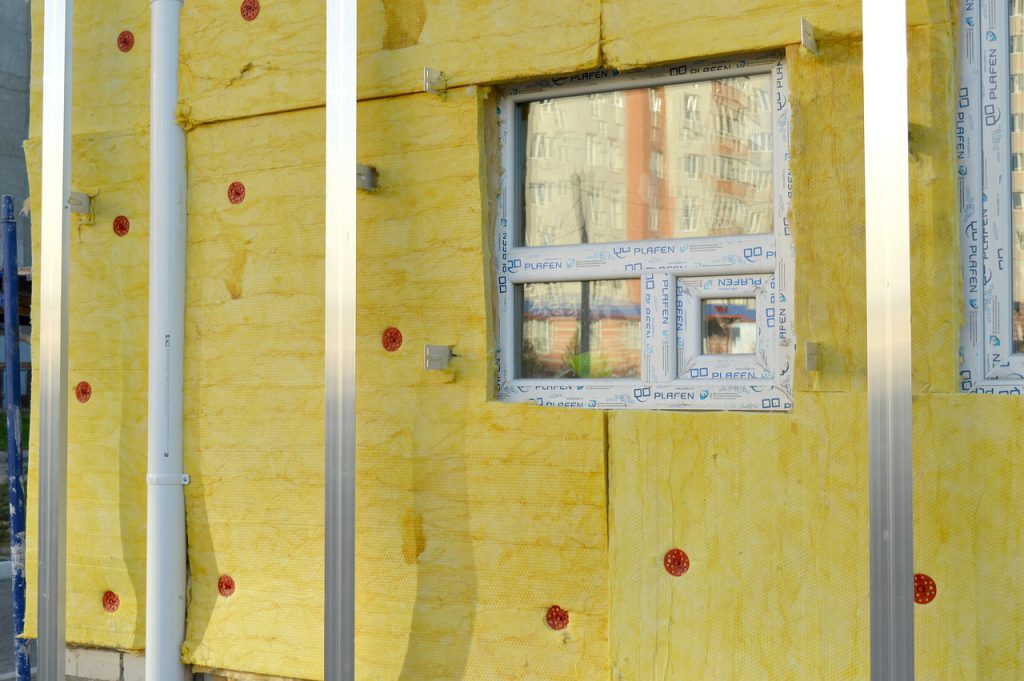
Guide insulation material : Insulation is a critical component of any home, significantly impacting energy efficiency, comfort, and utility costs. Choosing the right insulation materials can make a huge difference in maintaining the desired temperature inside your home, reducing energy consumption, and saving money. This guide will help you understand the different types of insulation materials available, their benefits, and the best applications for each, so you can make informed decisions for your home.
1. Fiberglass Insulation: Affordable and Effective
Why Fiberglass Insulation?
Fiberglass insulation is one of the most common and widely used types of insulation. Made from fine glass fibers, it is known for its affordability and effectiveness in reducing heat transfer.
Benefits of Fiberglass Insulation
- Cost-Effective: Fiberglass is one of the most affordable insulation materials available.
- Easy Installation: Available in batts, rolls, and loose-fill, making it easy to install in various applications.
- Fire Resistant: Naturally non-combustible, providing an added layer of safety.
Applications in Construction
- Walls: Ideal for insulating walls to prevent heat loss and improve energy efficiency.
- Attics: Loose-fill fiberglass is commonly used to insulate attics, providing a thick, effective barrier against heat loss.
- Crawl Spaces: Batts or rolls can be used to insulate crawl spaces, preventing cold air from entering the home.

2. Spray Foam Insulation: Superior Sealing and Performance
Why Spray Foam Insulation?
Spray foam insulation is known for its superior sealing properties and high R-value, making it one of the most effective insulation materials available.
Benefits of Spray Foam Insulation
- Excellent Insulation: Provides a high R-value per inch, making it highly effective at reducing heat transfer.
- Air Sealing: Expands to fill gaps and cracks, creating an airtight seal that prevents drafts and improves energy efficiency.
- Moisture Barrier: Acts as a barrier against moisture, reducing the risk of mold and mildew growth.
Applications in Construction
- Walls: Ideal for insulating walls, especially in areas with irregular shapes or hard-to-reach spaces.
- Attics: Can be sprayed onto the underside of the roof deck to insulate the attic and prevent heat loss.
- Basements: Effective at insulating basement walls and preventing moisture infiltration.
3. Cellulose Insulation: Eco-Friendly and Efficient
Why Cellulose Insulation?
Cellulose insulation is made from recycled paper products, making it an eco-friendly choice. It is treated with fire retardants to improve safety and offers good thermal performance.
Benefits of Cellulose Insulation
- Environmentally Friendly: Made from recycled materials, reducing environmental impact.
- Good Insulation: Provides a good R-value, improving energy efficiency and reducing heat loss.
- Soundproofing: Effective at reducing noise transmission between rooms.
Applications in Construction
- Walls: Loose-fill cellulose can be blown into wall cavities, providing effective insulation.
- Attics: Commonly used in attics to create a thick, insulating layer that reduces heat loss.
- Floors: Can be used to insulate floors, reducing heat transfer between levels and improving comfort.

4. Rigid Foam Insulation: High R-Value and Versatility
Why Rigid Foam Insulation?
Rigid foam insulation, also known as foam board insulation, is known for its high R-value and versatility. It is available in various types, including expanded polystyrene (EPS), extruded polystyrene (XPS), and polyisocyanurate (polyiso).
Benefits of Rigid Foam Insulation : Guide insulation material
- High R-Value: Provides a high R-value per inch, making it very effective at reducing heat transfer.
- Moisture Resistance: Resistant to moisture, reducing the risk of mold and mildew.
- Versatile: Can be used in a variety of applications, from walls to roofs.
Applications in Construction
- Walls: Can be used to insulate walls, providing a continuous barrier that reduces heat loss.
- Roofs: Effective at insulating roofs, preventing heat loss through the roof deck.
- Foundations: Can be used to insulate foundation walls, improving energy efficiency and reducing the risk of moisture infiltration.
5. Reflective Insulation: Ideal for Hot Climates
Why Reflective Insulation?
Guide insulation material – Reflective insulation, also known as radiant barrier insulation, is designed to reflect radiant heat away from the living space. It is particularly effective in hot climates where keeping heat out is a priority.
Benefits of Reflective Insulation
- Reflects Heat: Reflects radiant heat away from the living space, keeping the home cooler.
- Lightweight: Easy to handle and install, making it a convenient option for DIY projects.
- Durable: Resistant to moisture and does not degrade over time.
Applications in Construction
- Attics: Commonly installed in attics to reflect heat away from the living space and reduce cooling costs.
- Walls: Can be used in walls to improve thermal performance, especially in hot climates.
- Garages: Effective at insulating garages and reducing heat transfer.
Conclusion
Choosing the right insulation material is crucial for improving your home’s energy efficiency, comfort, and overall performance. By understanding the benefits and applications of different insulation materials like fiberglass, spray foam, cellulose, rigid foam, and reflective insulation, you can make informed decisions that will help you create a more energy-efficient and comfortable living space. Use this guide to explore the best insulation options for your home and start saving on energy costs today.
